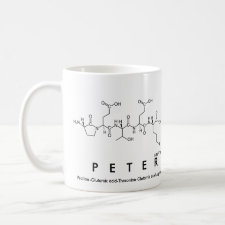
Authors: Legido-Quigley C, Oxelbark J, De Lorenzi E, Zurutuza-Elorza A, Cormack PAG
Article Title: Chromatographic characterisation, under highly aqueous conditions, of a molecularly imprinted polymer binding the herbicide 2,4-dichlorophenoxyacetic acid.
Publication date: 2007
Journal: Analytica Chimica Acta
Volume: 591
Issue: (1)
Page numbers: 22-28.
DOI: 10.1016/j.aca.2007.01.022
Alternative URL: http://www.sciencedirect.com/science/article/B6TF4-4MVN12T-3/2/0fbbfeda689e8a35a5c27a780415632e
Abstract: The affinity of a 2,4-dichlorophenoxyacetic acid (2,4-D) molecularly imprinted polymer (MIP), which was synthesised directly in an aqueous organic solvent, for its template (2,4-D) was studied and compared with the affinity exhibited by two other reference (control) polymers, NIPA and NIPB, for the same analyte. Zonal chromatography was performed to establish the optimal selectivity, expressed as imprinting factor (IF), under chromatographic conditions more aqueous than those described so far in the literature. Frontal analysis (FA) was performed on columns packed with these polymers, using an optimized mobile phase composed of methanol/phosphate buffer (50/50, v/v), to extract adsorption isotherm data and retrieve binding parameters from the best isotherm model. Surprisingly, the template had comparable and strong affinity for both MIP (K = 3.8 x 104 M-1) and NIPA (K = 1.9 x 104 M-1), although there was a marked difference in the saturation capacities of selective and non-selective sites, as one would expect for an imprinted polymer. NIPB acts as a true control polymer in the sense that it has relatively low affinity for the template (K = 8.0 x 102 M-1). This work provides the first frontal chromatographic characterization of such a polymer in a water-rich environment over a wide concentration range. The significance of this work stems from the fact that the chromatographic approach used is generic and can be applied readily to other analytes, but also because there is an increasing demand for well-characterised imprinted materials that function effectively in aqueous media and are thus well-suited for analytical science applications involving, for example, biofluids and environmental water samples
Template and target information: 2,4-dichlorophenoxyacetic acid, 2,4-D
Author keywords: molecular imprinting, 2,4-dichlorophenoxyacetic acid, frontal chromatography, adsorption isotherm



Join the Society for Molecular Imprinting

New items RSS feed
Sign-up for e-mail updates:
Choose between receiving an occasional newsletter or more frequent e-mail alerts.
Click here to go to the sign-up page.
Is your name elemental or peptidic? Enter your name and find out by clicking either of the buttons below!
Other products you may like:
 MIPdatabase
MIPdatabase









